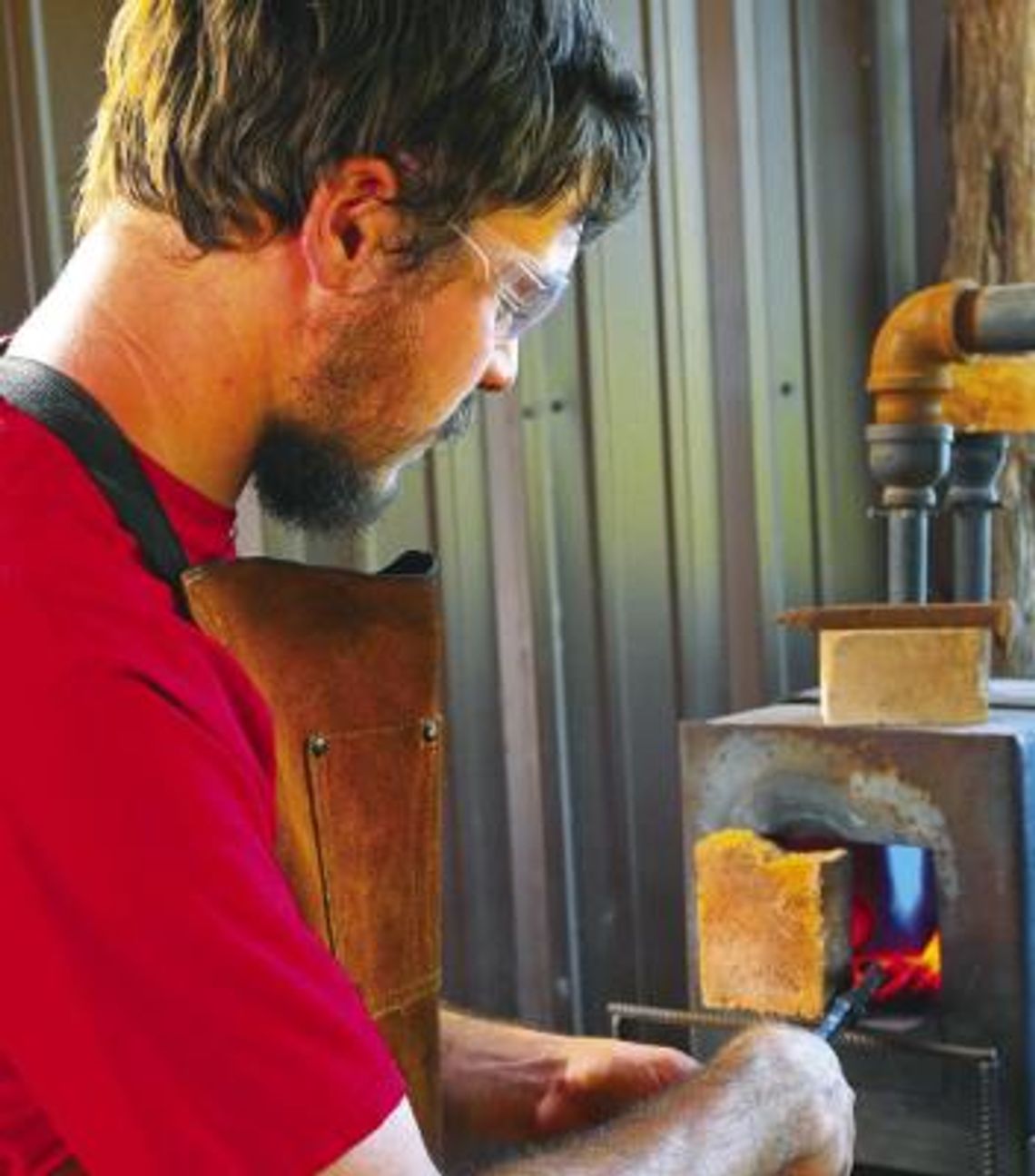It’s challenging to fully assess the impact that iron and steel have made in the history of humankind.
The iron age was an age of development, ushering in toolmaking, weaponry, transportation, bridge construction and eventually skyscrapers that created the level of civilization that we know today. Depending on the culture, it dominated the world from 1200 BC to 500 AD, after the stone and bronze ages.
In the nineteenth century in Europe, the blacksmith was an essential person in every town or settlement. Due to the lower cost and good quality of mass-produced steel in the 1870s, steel eventually replaced iron as the metal of choice and metal objects were created en masse in factories. Over time, the role of the blacksmith waned to the role of a craftsperson.
A blacksmithing demonstration at a renaissance festival persuaded Blanco resident Daniel Arnold to take up the hammer and tongs. As a young person, he liked to tinker with broken objects and to shape wood to pass the time. Creating things in three dimensions seemed to come easily to him.
He found a blacksmithing program in the welding department at Austin Community College and graduated two years later with a certificate. During the week he works in remodeling construction, but on Saturdays you’ll find him at the Pine Moore Old West Frontier town and film set, next to the Buggy Barn in Blanco.
While attending a Bible Study near Pine Moore, he noticed a blacksmith shed as one of the displays at the frontier town. Filled with objects collected by the owner, he offered to set up the shop as it would actually appear, and owner Dennis Moore took him up on the offer. Before long, Arnold had installed a forge, built a workbench and anvil stand and started producing all kinds of handmade implements and knives. He hung a shingle and the Blanco River Forge was born.
Nearly every object that Arnold creates begins with a 20 foot length of steel. Occasionally he’ll use recycled materials such as rebar or railroad spikes, but most of them start out as a steel bar. He thinks of a design, decides how much material he needs, and cuts what he needs from the stock he has on hand.
After cutting the bar he’ll use, he puts down a few layout marks to help guide him as he works. From there he begins heating the steel and makes a few passes at working the material.
“I often have to make a tool so that I can actually make the project,” he said. “So, I put the original project aside to work on the tool. And sometimes,” he continued, “I have to make a tool to make another tool to make the project.”
When asked what kind of skill it takes to create these objects by hand, he said that having the knack to think mechanically in three-dimensions really helps.
Once he has the tools he needs, he’ll work the steel by putting it in a forcedair propane forge until it glows orange red. With tongs, he removes it from the forge, places it on an anvil and shapes it by striking it with a hammer. He repeats this process until he has the contour he wants. If the steel gets too hot, he’ll “pull it down” or “quench it” which means he’ll cool down the temperature of the steel for a second in a nearby water barrel before working it again.
If his project requires a round shape, he’ll use a cone to get the perfect contour. The expression “to beat the daylights” out of something refers to this process. To make sure something is perfectly round, he’ll shape the item around the cone until “no daylight is visible” between the steel and the cone.
To finish up, he’ll use a wire brush to knock any “scale” or fragments off the item and allow it to cool a little so that he can melt a paste wax on it. He finishes it with a quick polish, lets it cool completely and calls it done. It is ready to be sold.
Our everyday language employs several expressions that originate with blacksmithing.
“For example,” he said, “‘smith’” is a form of the word “smite,” which means to strike something that in this case, means to strike the hot steel with a hammer.”
To lose one’s temper is another reference to smithing. When making a tool, steel has to be alternately hardened and cooled in still air or “tempered.” Hardening makes the steel brittle and tempering helps to take the fragility out of the piece. If steel gets too hot after it has been tempered, it has “lost its temper,” meaning it is too soft and no longer good for its intended use.
Some of the household items you’ll see on the bench in front of Arnold’s forge are long-handled marshmallow roasters, trivets, decorative hooks and drawer handles, barbeque tools, Christmas stocking mantle hooks for stone fireplaces, and handbag holders. You’ll also see axes, hammers and several sizes of knives and, for outdoor enthusiasts, sturdy tripods that hold cast iron cauldrons over a campfire.
As a custom blacksmith, Arnold welcomes commissions for architectural and decorative work along with his regular toolmaking and knife design. His talents have led him into the realm of art. His artwork will be part of an exhibition in September at the Christensen Gallery in Blanco.
For more information about Daniel Arnold and his work, go to blancoriverforge. com.







